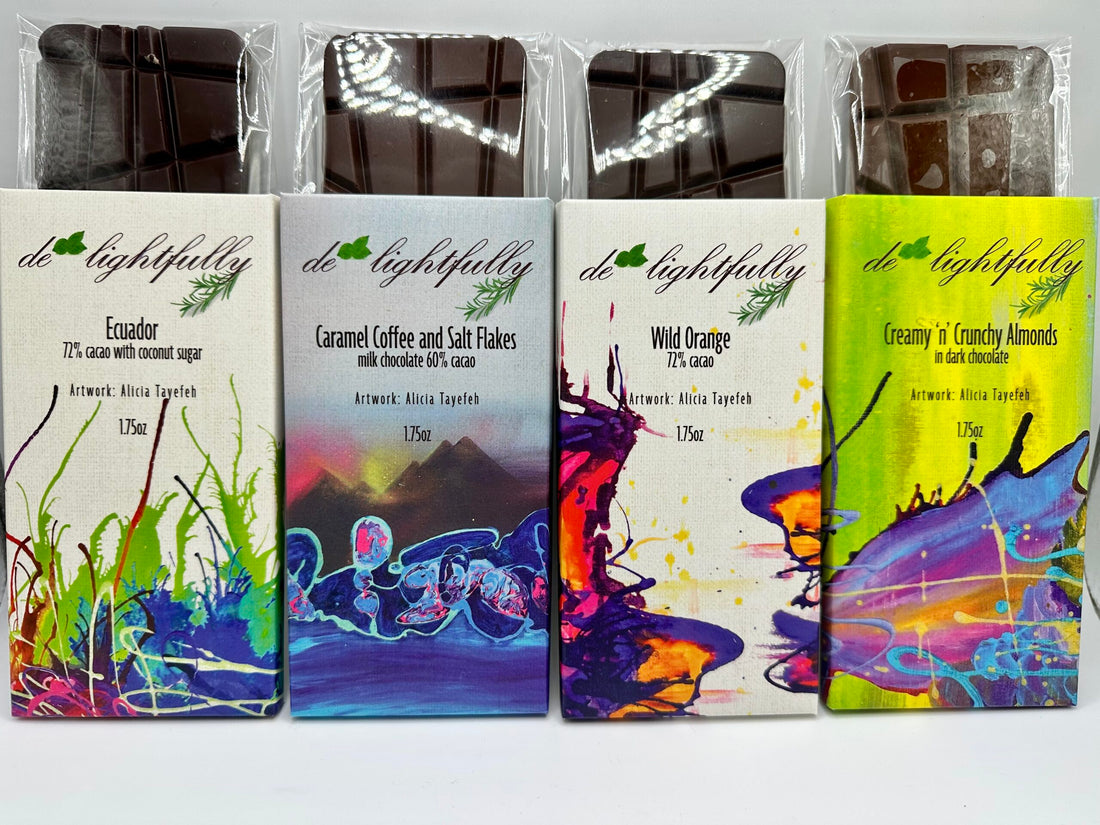The process of making chocolates by a chocolatier involves several steps, including sourcing high-quality cocoa beans, roasting and grinding them, mixing them with other ingredients like sugar and milk (for milk chocolate), and molding and tempering the chocolate to achieve the desired texture and appearance. Here’s a simplified overview of the chocolate-making process.
Cocoa bean selection
The process begins with the selection of high-quality cocoa beans. Chocolatiers often source beans from different regions to achieve specific flavor profiles. The beans may be single-origin (from a specific region) or a blend of beans.
Roasting
The selected cocoa beans are roasted to bring out their flavor. The roasting temperature and time can vary depending on the desired chocolate flavor. Roasting also helps remove any unwanted flavors and moisture from the beans.
Winnowing
After roasting, the cocoa beans are cracked open, and the outer shells are removed in a process called winnowing. This leaves behind the cocoa nibs, which contain the cocoa solids and cocoa butter.
Grinding
The cocoa nibs are ground into a paste called chocolate liquor or cocoa mass. Despite its name, chocolate liquor doesn’t contain any alcohol; it’s a thick, liquid form of pure cocoa.
Conching
The chocolate liquor is then subjected to a process called conching, where it is continuously mixed and aerated in a conche machine for hours or even days. This process helps to smooth out the texture of the chocolate and develop its flavor. It also allows some of the volatile compounds to evaporate, further enhancing the chocolate’s flavor profile.
Blending
Depending on the desired type of chocolate (dark, milk, white), additional ingredients are added to the chocolate liquor. For dark chocolate, sugar is typically added. For milk chocolate, milk powder and additional sugar are incorporated. White chocolate consists of cocoa butter, sugar, and milk solids.
Refining
The chocolate mixture is further refined to achieve a smooth texture. This can involve passing the mixture through a series of rollers or refining machines to break down any remaining particle sizes.
Tempering
Properly tempering chocolate is crucial to ensure it has a shiny finish, a smooth texture, and a satisfying snap when you bite into it. Tempering involves carefully heating and cooling the chocolate while continuously stirring it. This process encourages the cocoa butter crystals to form in a stable structure, preventing the chocolate from developing a dull appearance or a grainy texture.
Molding
Once the chocolate is properly tempered, it can be poured into molds to create various shapes and sizes, such as bars, truffles, or bonbons.
Cooling and setting
The molded chocolate is allowed to cool and set in a controlled environment. This can be done at room temperature or in a cooling chamber, depending on the specific requirements of the chocolatier.
Demolding
After the chocolate has fully set, it can be removed from the molds. Chocolatiers may use specialized techniques to ensure that the chocolates release cleanly from the molds without any imperfections.
Packaging
The finished chocolates are carefully packaged, often in decorative boxes or wrappers, ready to be sold to customers.
It’s worth noting that chocolatiers may also incorporate various fillings, flavors, and decorations into their chocolates, creating a wide range of unique and artisanal chocolate creations. The entire process requires skill, precision, and an understanding of chocolate’s complex chemistry and flavor development.

